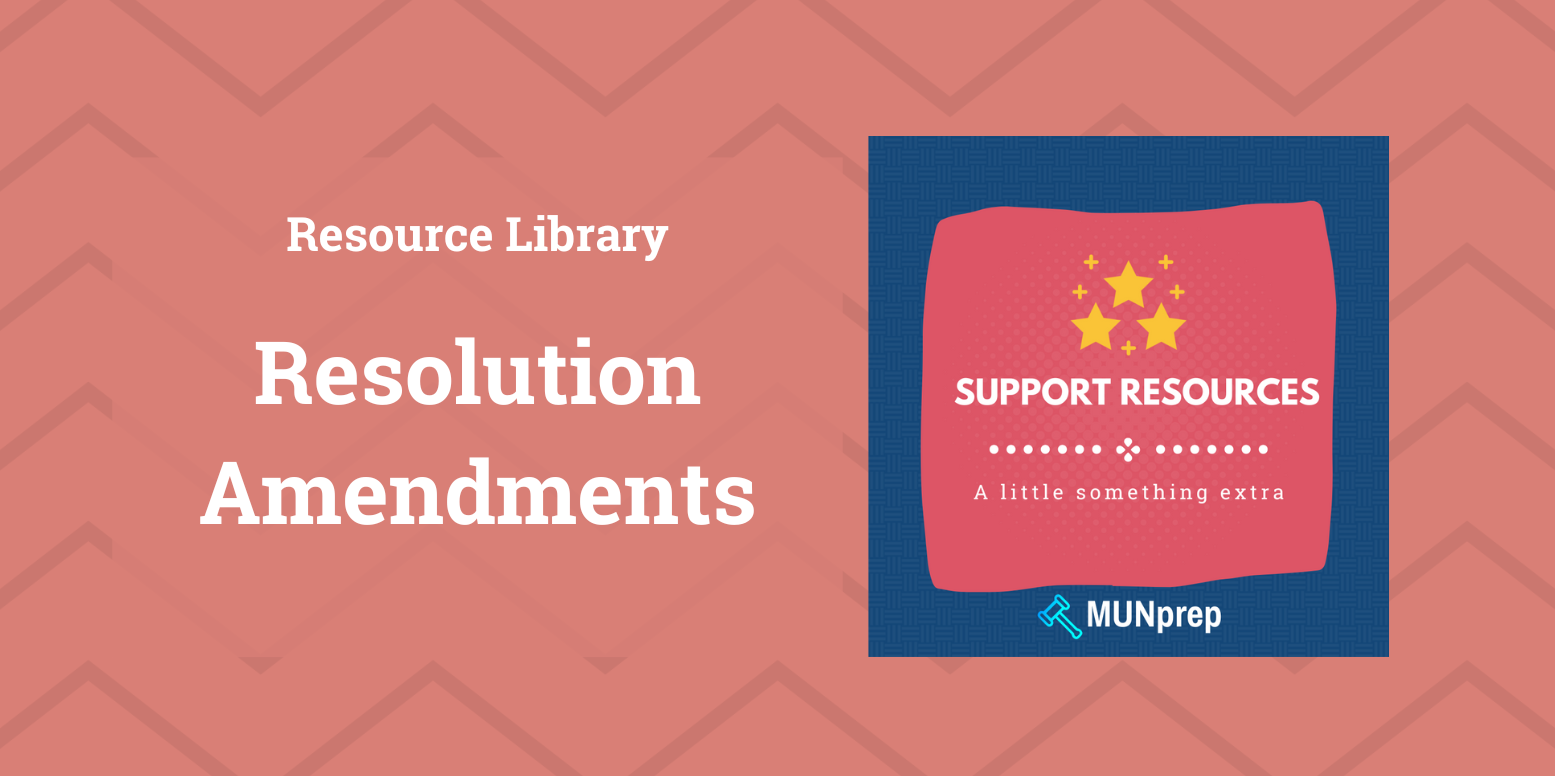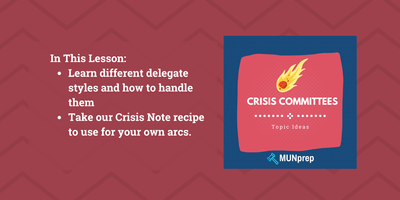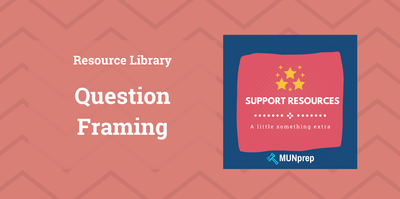Amendments Explained: A Delegate’s Secret Weapon

Amendments are the final step to getting a resolution passed - by this point you've built a bloc, drafted a resolution and introduced it to your committee.
But after the dust settles and you've made your pitch, its the committee's turn to suggest any changes that they think could improve things, and it's your job to work with the committee to put together a document that a majority would feel comfortable voting for.
Today, we'll walk you through everything you need to know - from how to work collaboratively to add any improvements, and how to diplomatically turn down amendments as well if the need arises.
Why Amendments Matter
Amendments are formal proposals that change the text of a draft resolution—by adding, removing, or modifying clauses. They are often the final part of the resolution writing process and play a key role, sometimes it can take up 20-30% of the time you spend debating during a conference.
They serve as a forum where different blocs can refine resolutions, incorporate new ideas, or reach compromises. By mastering amendments, you can shape the debate, rally allies, and ensure that the final resolution aligns with your delegation’s objectives.
The Basics of Amending
An amendment is a change made to a draft resolution during a committee session. Once a draft resolution is submitted and accepted by the Chair, delegates have the opportunity to propose modifications.
These modifications typically focus on:
- Adding a new clause or part of a clause
- Removing (striking) an existing clause or piece of text
- Modifying the wording in an existing clause
What Does An Amendment Look Like?
By the time you're finished with your Amendment, it will look something like this:

Why Bother With Amendments?
There are 4 main reasons for amendments:
- Refinement: Even the best draft resolutions often contain oversights, ambiguities, or grammatical errors. Amendments allow for a final, polished version of the text to be put to vote.
- Collaboration: Different blocs can express their concerns or include their priorities, which can lead to broader consensus and more robust solutions.
- Realism: In real UN committees, it’s common for multiple rounds of negotiations to refine documents. Amendments simulate this real-life legislative process.
- Strategic Leverage: Amendments are often used strategically, whether to bring new supporters on board or to weaken a rival bloc’s resolution. Pushing through a controversial unfriendly amendment can easily stop delegates from voting for a resolution as a whole.
Friendly vs Unfriendly Amendments
There are two primary types of amendments in MUN:
- Friendly Amendments: These are changes that all sponsors of the resolution agree on. If accepted, they become part of the resolution without further debate.
- Unfriendly Amendments: These are proposed changes that some sponsors may not agree with. They require a debate and a vote before being included in the resolution.

When and How Amendments Are Used
Amendments come in to play just before the formal vote process happens. After resolutions have been presented and the sponsors have hosted a Q&A, the committee can then decide if they want to move straight into voting procedure, or if they would like to take some time to draft amendments.
- In bigger committees, this will almost always happen and the amendments period can be quite extensive.
- In smaller committees and crisis committees, you might not always end up spending that much time on amendments.
Submitting an Amendment
- Identify the Clause: Clearly indicate the resolution number/identifier, clause number, and the specific text you plan to add, remove, or modify.
- Specify the Change: Use clear, concise language. If you’re removing text, quote the exact words you want removed. If you’re adding text, show exactly where it goes.
- Gather Signatories: Unfriendly amendments typically require a certain percentage or number of committee members to sign on. This can vary per conference.
- Submit to the Chair: Follow the conference’s procedure (email, paper form, or an online system). Be sure to include your country, sponsors/signatories, and the type of amendment (friendly or unfriendly).

Gathering Support for Amendments
There are a few ways you can gain support for your amendment, but you should almost always start with your bloc.
- Allies (Your Natural Base): Your bloc or close partners will typically sign on and vote for your amendments—especially if it strengthens your mutual interests or if the amendment targets a rival resolution.
It can be smart to get signatories from outside your bloc at the end as well. It shows that you are willing to work with anybody.
- A Mix of Allies and Opponents: Seek delegates whose policies align with yours on specific points, even if they’re normally on “the other side.”
Using Amendments to Your Advantage
Amendments aren’t just about grammar fixes. They can be tools of persuasion, negotiation, or even sabotage (not generally recommended).
Knowing how to use them effectively can significantly elevate your performance in committee.
Positive Tactics
Strengthening Resolutions
If you want a particular resolution to pass, propose amendments that clarify objectives, add helpful initiatives, or address concerns from other blocs. These changes can rally additional supporters.
This would generally be best for a bloc that you are aligned with. It can also encourage them to propose similar friendly amendments for your resolution as well.
Building Alliances
- Collaborative Drafting: Approach other delegations privately to co-write amendments, or have them as co-submitters. This fosters goodwill and can ensure stronger support in the final vote.
- Offering Concessions: If another bloc wants language changed, propose a compromise in the form of an amendment. This can solidify alliances or garner crucial votes.
Sabotage
Steering Debate
By proposing amendments that reference specific issues (e.g., human rights concerns, financial obligations), you can shift the debate toward topics favorable to your country’s interests or highlight aspects that might have been overlooked.
Weakening or Splitting Blocs
- Divide and Conquer: Propose amendments that will cause friction among sponsors, potentially splitting their voting bloc.
- Poison Pills: Insert language that might be too controversial, forcing delegates to distance themselves from the entire resolution if they can’t remove it.
Defending Your Resolution - Stopping Unfriendly Amendments
While we generally recommend accepting proposed amendments as it can make a resolution more complete, and more of a community effort. There will also be times when a proposed amendments just doesn't work for your plans.
In those cases, there are two things you can do:
Propose a Substitution Amendment
- How It Works: Work with the original drafters of an unfriendly amendment to try to propose changes that will actually be mutually beneficial.
- Why It’s Useful: Substitution amendments can redirect the committee’s attention and make the original amendment redundant or less appealing.
Divide the Question
- Divide Harmful Clauses: Propose dividing the question to isolate controversial parts of an amendment into separate votes. This can help salvage the resolution while defeating the unwanted components of the amendment.
- Frame the Division Strategically: Argue that splitting the amendment ensures the committee only votes on relevant or constructive elements, highlighting the flaws in the harmful parts.
Example Amendments
Below are some common scenarios with simplified sample text. In all cases, the main goal is clarity—make sure the Chair and delegates can quickly see what you’re changing:

Tips for Effective Amendments
- Be Specific
Vague language leads to confusion and objections. Clearly indicate which words or clauses you are modifying. - Stay Relevant
Keep amendments tied to the resolution’s core topic. Unrelated additions often fail or cause unnecessary controversy. - Start Early
Don’t wait until the last second to propose amendments. Submitting earlier lets you collect more signatures and negotiate with sponsors. - Seek Consensus First
Before submitting an unfriendly amendment, see if it can be turned friendly by talking to the sponsors. This saves time and ensures smoother passage. - Avoid Overloading
While there’s no strict limit to how many amendments you can submit, too many scattered or minor changes can dilute the committee’s focus. - Use Clear Formatting
When emailing or handing in your document, include the resolution number, the specific operative clause(s), and the exact wording changes.
Things to Avoid
- Submitting Irrelevant Amendments: Don’t add random or trivial changes just to look active. It will irritate the Chair and other delegates.
- Overpacking Amendments: Each amendment should tackle one major change (add, remove, or modify). If you need multiple changes, submit multiple amendments—unless your conference rules allow grouping them logically.
- Being Overly Attached to Your Draft: MUN is about collaboration and compromise. If your clauses are amended by others, it’s often for the greater good of passing a stronger resolution.
Conclusion
Amendments are the heart of collaborative, dynamic debate in Model UN. Whether you’re adding a crucial clause to strengthen a resolution or proposing a game-changing modification to rally new supporters, amendments give you the flexibility to adapt and respond to the unfolding realities of the committee.
By mastering the processes—knowing when to propose an amendment, how to gather support, and how to leverage friendly vs. unfriendly amendments—you’ll be well on your way to becoming a formidable delegate.
Embrace amendments as an integral, creative part of the MUN experience, and use them to transform an ordinary draft resolution into a truly impactful piece of legislation.






